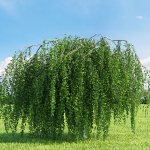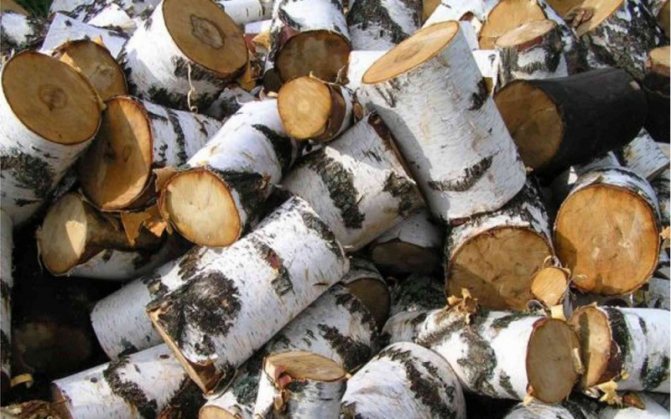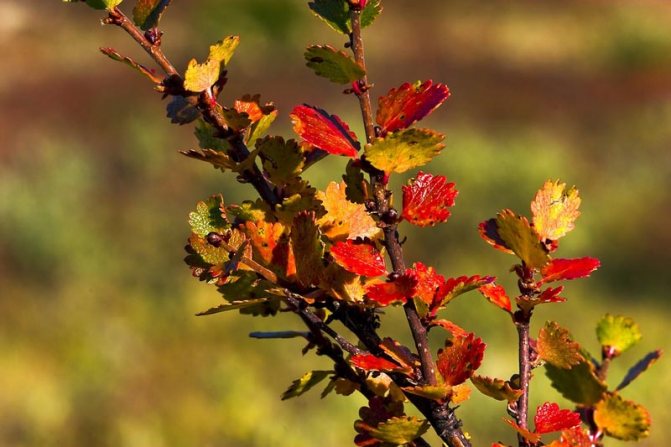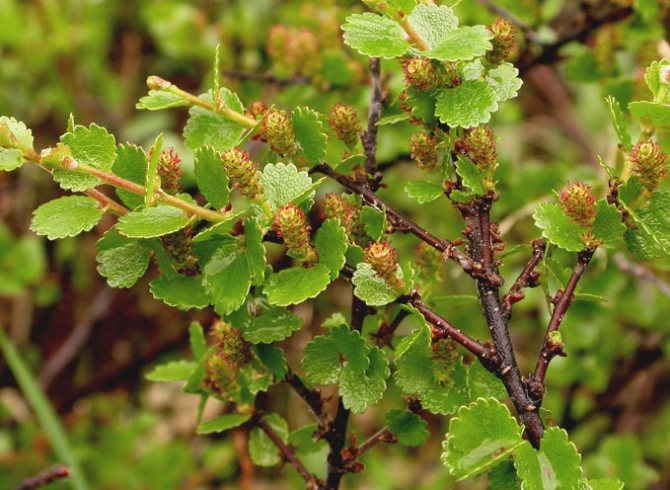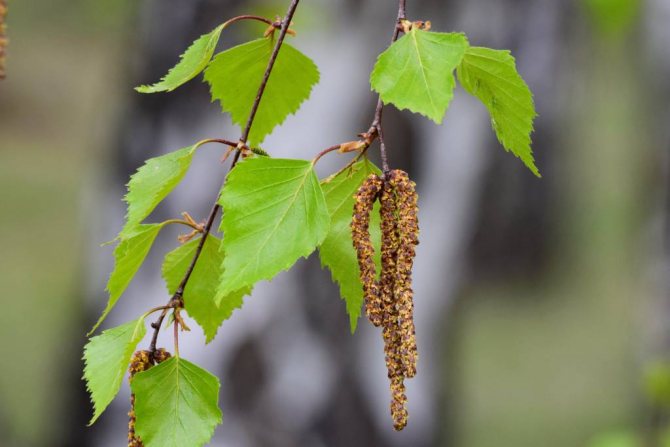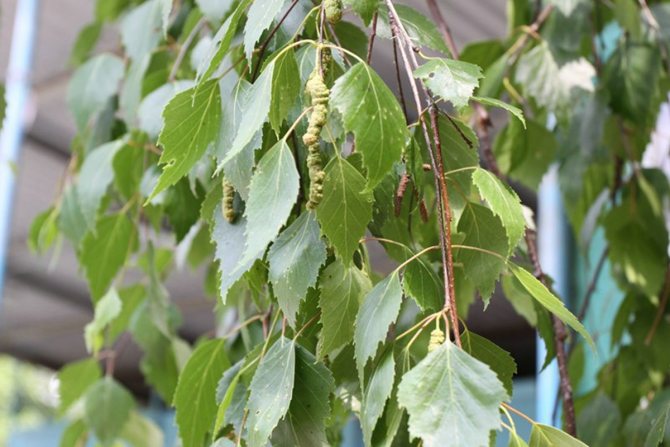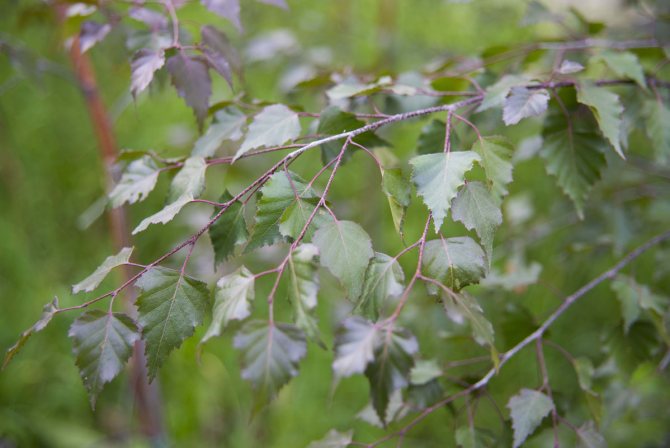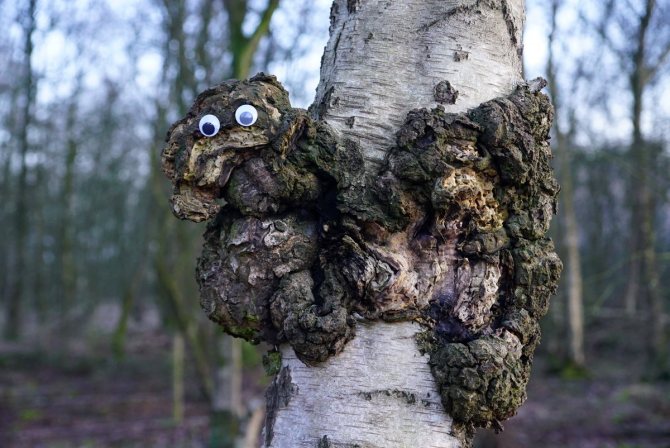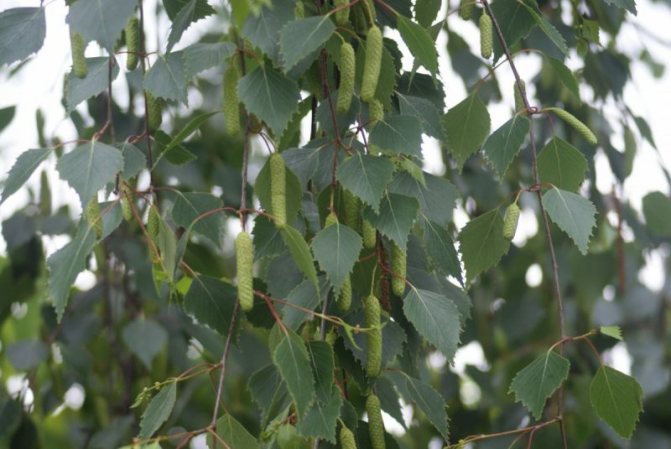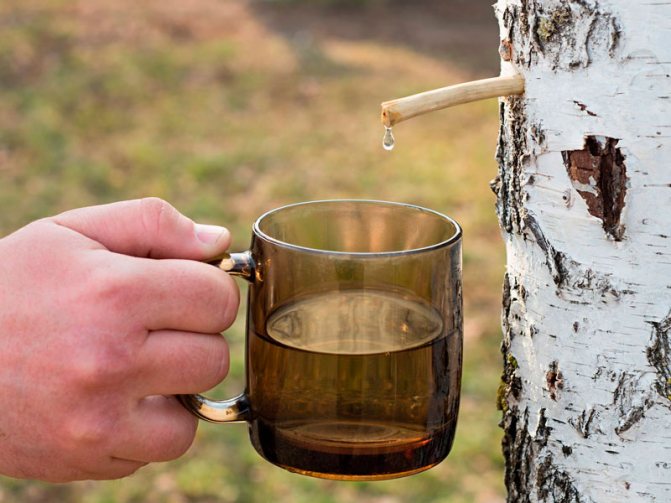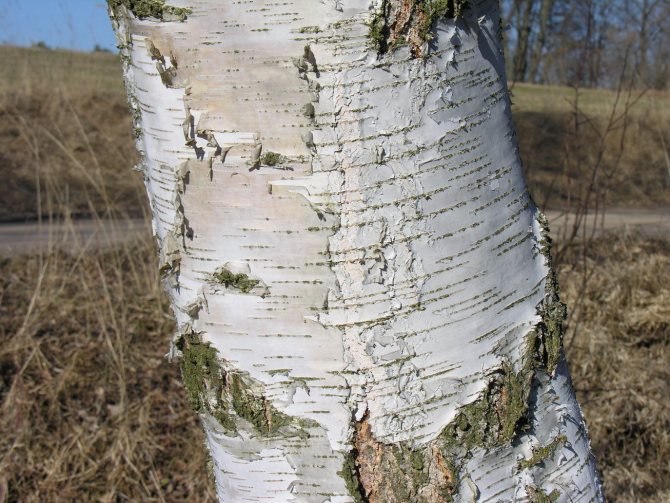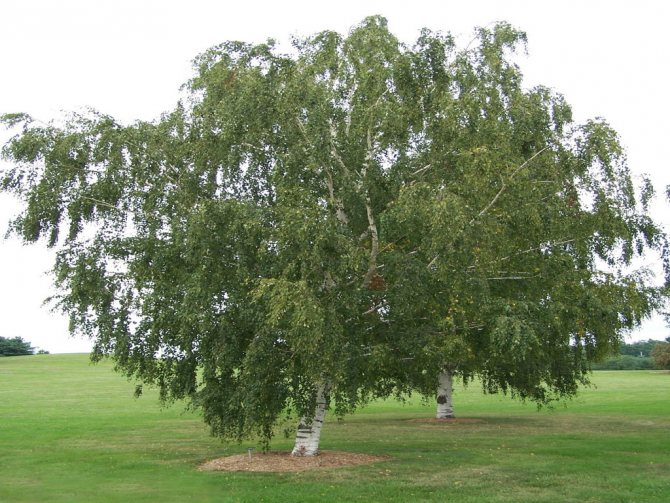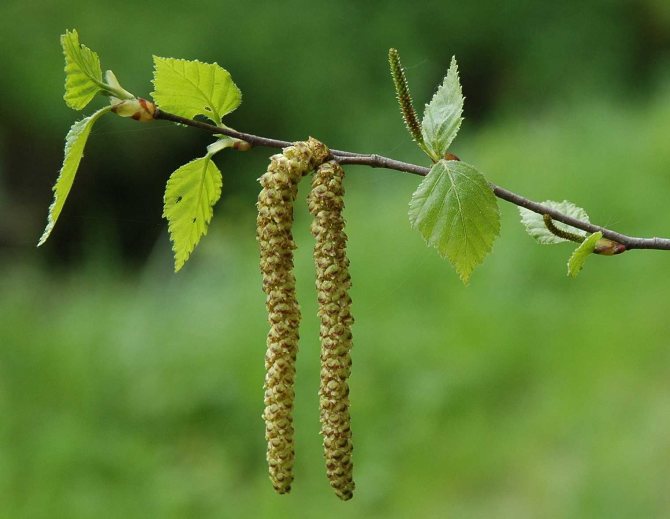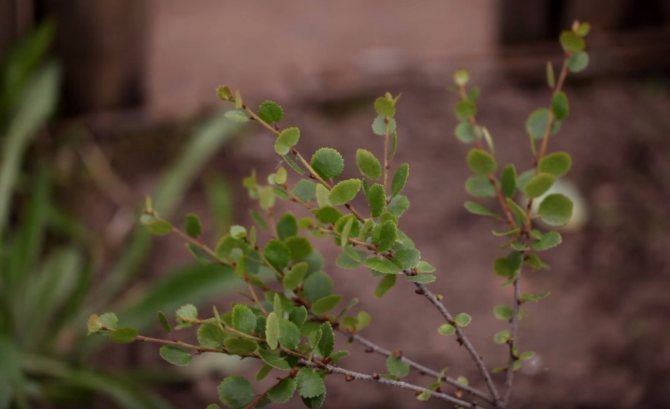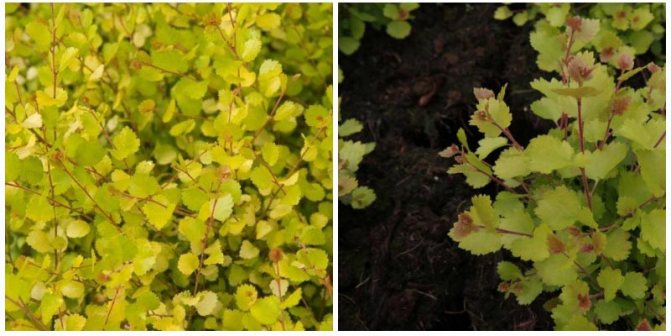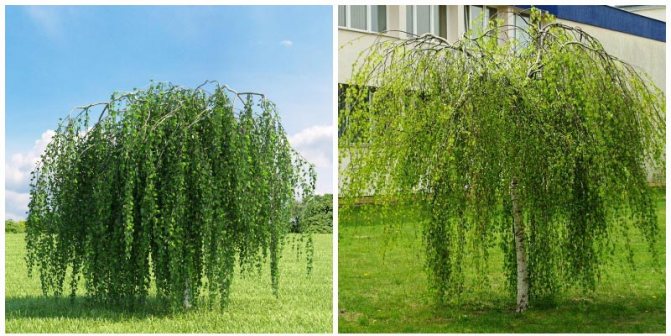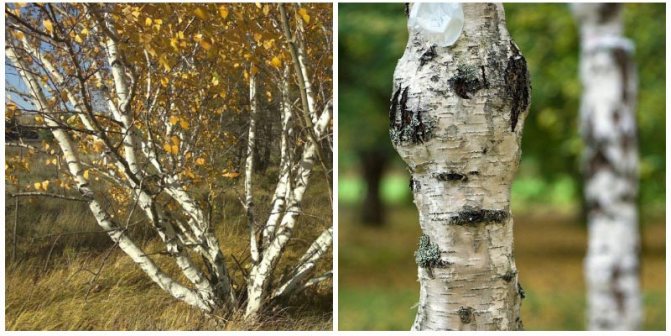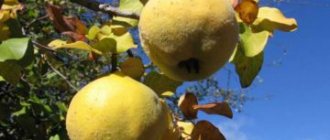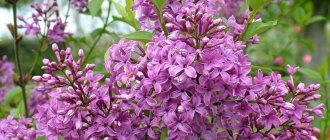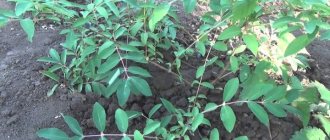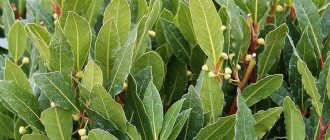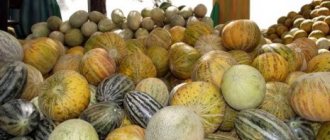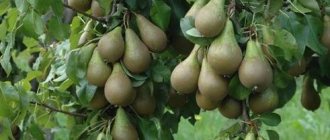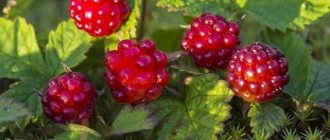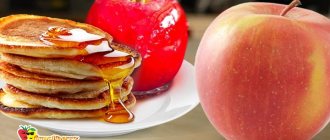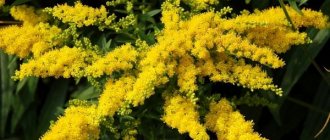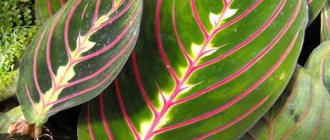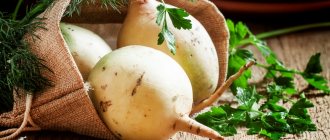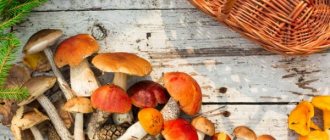Since antiquity, white birch has been praised in literature and music, and appears in the landscapes of Russian artists. The birch has become a kind of symbol of Russia. Other names are weeping birch, drooping, warty, common. It is called drooping and drooping because of the peculiar growth of branches, and warty - thanks to the bulges on young branches, resembling warts. But also the well-known paper birch, you can familiarize yourself with it by following the link.
Types of birch
Of the 4 dozen varieties of birch, most of them are suitable for the chemical industry and furniture. This is largely due to physical indicators, which indicate that the tree does not differ in high density, the required hardness, and at the same time is subject to harmful destruction over time. Nevertheless, there are varieties of birches that are considered very valuable and can be used in various sectors of the national economy.
A few words about common birch:
Dangling
This variety of birch reaches a maximum height of 30 meters in adulthood. It comes after her 8th birthday. Then the brown trunk of the tree turns white. The wood is colored yellowish-white. It is one of the heaviest and most dense woods.
The second name is warty birch, this species was received due to the fact that the tree is covered with resin warts. Young birch has straight branches. And the old one - sagging from top to bottom. The leaves are shaped like a rhombus. The color of the birch is hanging in May or June. The flowers are brown. Grows in wooded, mountainous areas, as well as on plains throughout Russia.
The tree is very light-loving, its lifespan can reach 120 years. It is appreciated for its high calorific value. Used in the manufacture of charcoal, ski and plywood. Wood performance deserves a score of 5 points.
Photo of a hanging birch
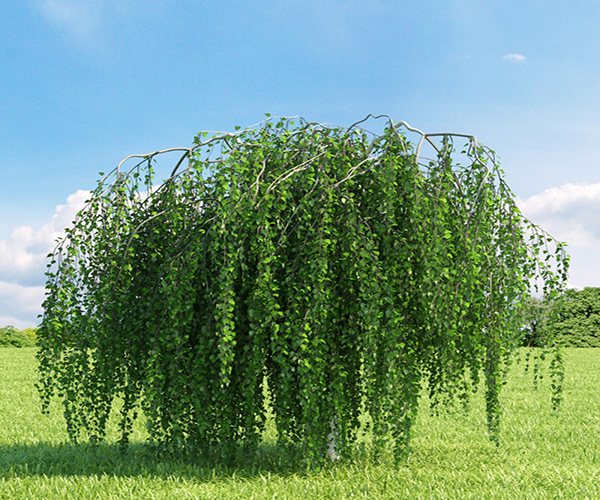
Dwarf
This is a branchy shrub very similar to a large birch. It grows in the northern regions of Russia and throughout Canada. Selects mountainous or swampy terrain. The leaves of the plant are small, dark green above, light below. Small earrings have an oval shape. The bark of an adult plant is smooth, brown, covered with a cork layer.
The shrub grows slowly, but is able to withstand critically low temperatures. In the North, dwarf birch leaves are used as food for deer. And the trunk and branches for the fire. Dwarf birch is also used in landscape design.
Photo of a dwarf birch
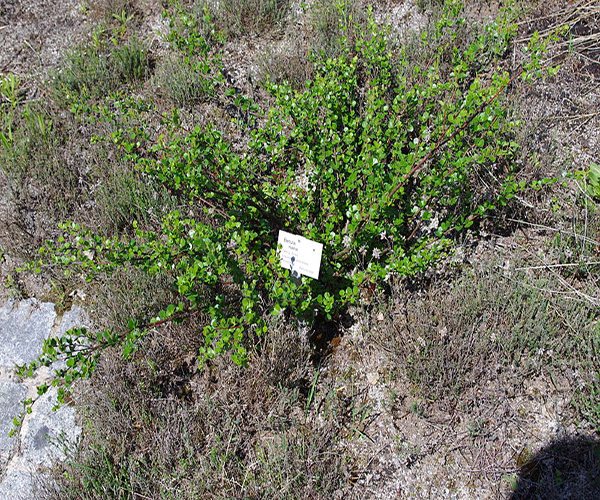

Karelian
A neighboring dangling birch in the forests of Karelia, Belarus, Lithuania and the northwestern regions of the European part of Russia is often Karelian birch. The tree has a special burl (outgrowth) on the trunk. It is highly prized for its interesting texture.
It is a subspecies of drooping birch and grows in small groups. There are three types:
- undersized,
- medium height,
- tall.
The wood pattern is the most beautiful and original. Wood is used to create sculptural compositions, dishes, and other handicrafts. The wood of the Karelian birch is one of the most valuable and it is it that is often the symbol of the North of Russia.
Photo of Karelian birch
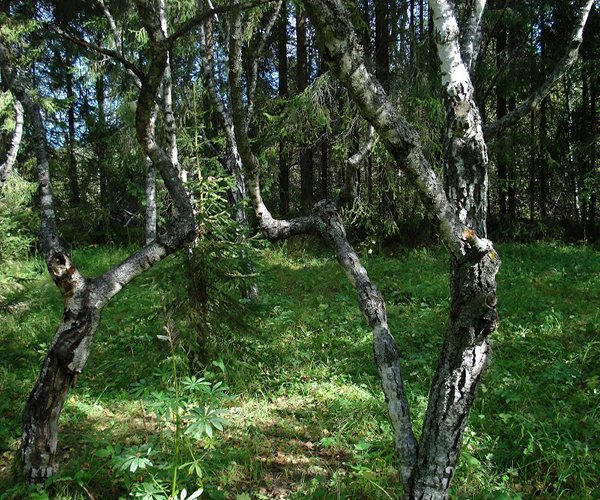

Daurian (Korean)
Black birch reaches a height of 25 meters. It grows on the lower slopes of mountains in Japan, North China, Korea, Mongolia and the Far East.It is believed that where this birch is a good soil for agriculture. Leaves are oval dark green. Loves light and moisture. Most often used for decorative purposes or for the production of coal, as well as in the manufacture of handicrafts.
What is black birch, the video will tell:
Squat
This type of birch is a shrub whose maximum height does not exceed 2.5 meters. Most often, squat birch grows in swamps in Western Siberia, the Far East, in central Ukraine.
The leaves of the shrub are oval with resinous warts. The buds are oval, pubescent. Color together with the appearance of leaves in May. Leaves, buds and bark are used by humans only for medicinal purposes or for kindling solid fuel stoves.
Photo of a squat birch
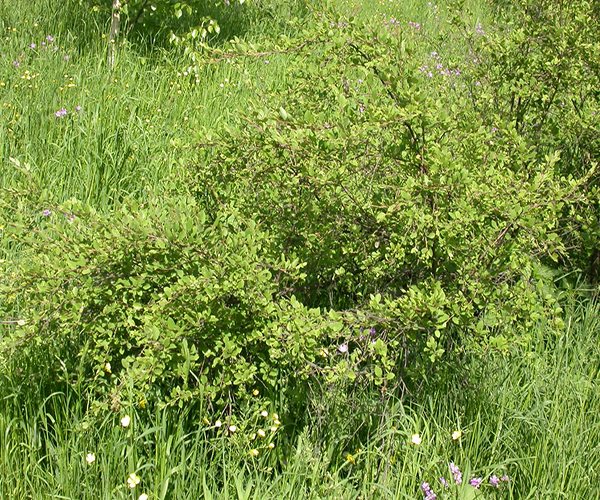

Iron
The second name is Schmidt birch. Its wood not only does not sink in water, but also does not burn. Grows on rocky ground in Japan, China, southern Primorye. The tree grows up to twenty meters, the crown begins after 8 meters. The color of the bark ranges from dark gray to brown.
This birch is a long-liver. Lives up to 400 years. It grows very slowly for the first half century. Loves light. With a small amount of it, it strongly tilts the trunk. Its use on the farm is impossible, since there are no tools that could process it.
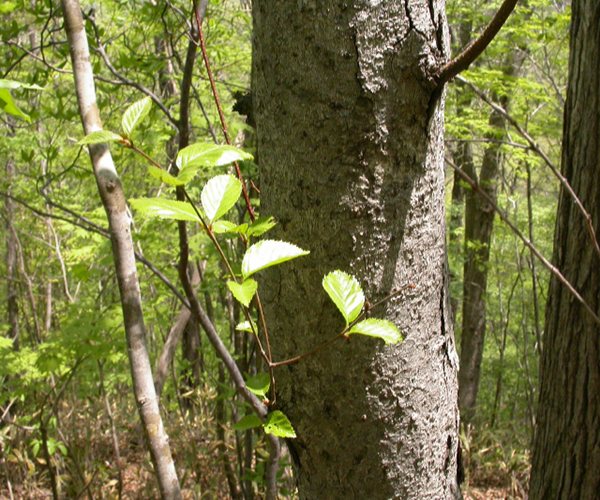

Red
This is a tree whose height does not exceed 5 meters. The bark is yellowish gray. Red birch or Yarmolenko grows only in Kazakhstan, and only in the Almaty region. There is very little of it there, so it is listed in the Red Book and its log house is prohibited.
Photo of red birch
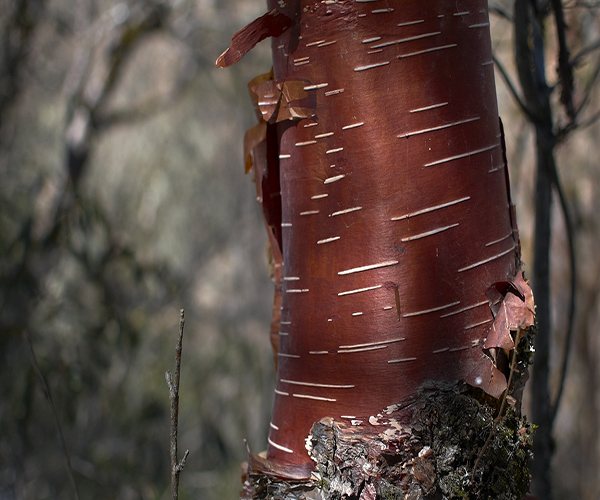

Erman birch (stone)
Betula ermani Cham. It grows in Sakhalin and Kamchatka, as well as in the Far East and Japan. Sometimes it is called Siberian. The bark of a tree, the height of which is no more than 20 meters, is brown in color. This birch is frost-resistant. Grows in rocky soil. It is used for kindling, in the production of coal, as well as in the manufacture of handicrafts.
In the photo - Erman's birch
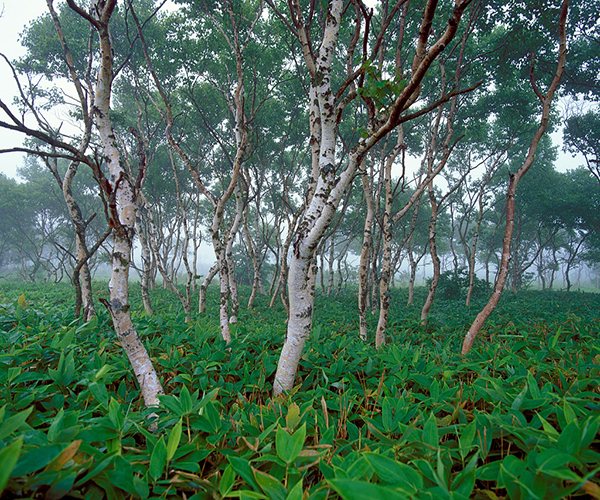

Description
Deciduous tree up to 20-30 meters high, crown diameter up to 15 meters, uneven oval crown and hanging branches. Leaves are oval-triangular, narrowed towards the end, serrated at the edges, in autumn they turn bright yellow. The leaves of a young tree are sticky.
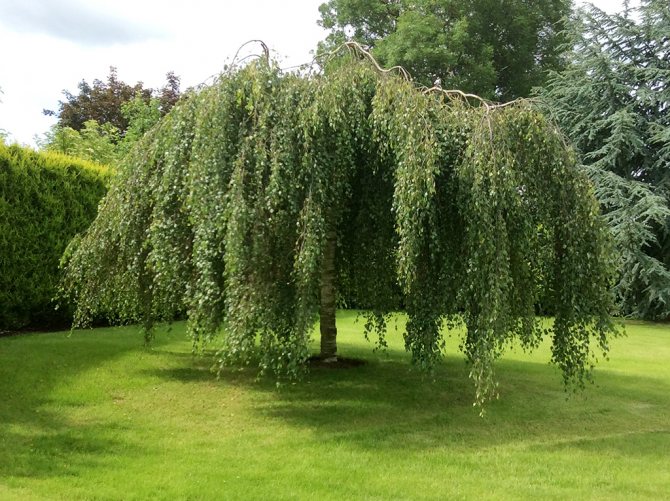

Young plants have brown bark, adults have white bark with black base and spots. With age, the bark cracks underneath. Lives 120-150 years, blooms in April and May before the leaves open, bears fruit in September - elongated oval nuts with two wings.
The main root is abundantly overgrown with lateral roots, which develop and become strong enough to support the tree. Then the taproot dies off.
Features of wood
Birch grows quickly, adapts easily, and recovers well. Its wood is easily processed, it is perfectly polished.
They make from birch:
- parquet,
- skiing,
- plywood,
- products for turning production,
- furniture.
The wood is not susceptible to decay, which is why birch bark letters were found, as well as tues, boxes, boats. Each of these products is over 500 years old. The Slavs believed that birch saves from troubles and ensures well-being. Therefore, she was always planted next to housing. It is quite expensive to use birch in a modern economy, although its technical and mechanical characteristics are rather high.
Care
At the beginning of spring, before the leaves appear, and at the end of spring, tree feeding is carried out. For this, a special mixture is prepared: for 10 liters of water, 10 g of urea, a kilogram of mullein, 15 g of ammonium nitrate. For feeding 10-20-year-old plants, 30 liters of solution are needed, 30-year-old and older trees - 50 liters. Watering is carried out during planting and for three to four days after it.Loosening of the soil is carried out to a depth of 3 cm in the process of weeding. Trunk circles are mulched with peat, wood chips, peat compost with a layer of 8-12 centimeters. Dry branches are cut in the spring.
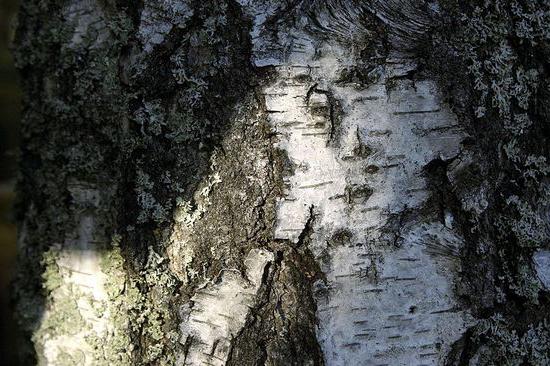

Physical and mechanical characteristics of birch
Birch is not one of the leading materials in the construction industry. Its wood is used here for the production of semi-finished products. However, it plays a big role in the furniture industry. This purpose is due to the various physical characteristics of wood.
Density
The relative, conditional density of wood is the proportional ratio of parts of the same weight, one of which is absolutely dry, the other at the limit of hygroscopicity. Birch refers to wood with an average density. With a relative humidity of 12%, it is 0.65 g / m3. And with a humidity of 25% it is 0.71 g / m3. It is noteworthy that the density of late wood is more than 2 times higher than that of early wood.
Durability of wood
The resistance to destruction from the outside is called the density of the wood. This indicator is the less, the higher the moisture content of the tree. External defects of the wood also affect the strength. The strongest wood is black birch.
With a moisture content of 12%, the tensile strength indicators are as follows:
| Birch | Under statistical bending | When the fibers are compressed | For radial shearing | With tangential cut |
| Daurskaya | 1202-105 Pa | 601.44-105 Pa | 125-105 Pa | 152-105 Pa |
| Ribbed | 1265.6-105 Pa | 628.32-105 Pa | 138.43-105 Pa | 172-105 Pa |
| Stone | 1266-105 Pa | 609-105 Pa | — | — |
The listed indicators are inherent in most varieties of birch wood. These parameters classify wood as a soft tree.
But the strong varieties of birch are as follows:
- Iron;
- Fluffy;
- Weeping.
Moreover, any type of birch wood has the lowest resistance to radial splitting. A similar split is used in the manufacture of firewood. And the maximum strength is obtained by wood of any birch with a tangential split. In this way, durable products are made, for example, ax handles and chisels.
The catch indicators of strength, like most other physical parameters, are determined at natural moisture.
Hardness
The generally accepted scale for determining the hardness of wood of different species is laid down in the Brinell method. According to him, most varieties of birch belong to the types of wood of medium hardness, but rather wear-resistant. That is why parquet is made of birch, which, by the way, is quite popular.
So, ordinary birch belongs to hard types of wood, its end hardness index exceeds the level of 38.6 MPa. But iron birch has a hardness index that is higher than 82 MPa.
Wood weight
The weight of wood depends on the amount of checkered tissue, the anatomical structure of the tree, the amount of water in it and strength, hardness, calorific value, opportunities for swelling, degree of shrinkage.
Specific gravity indicators
| Average weight of freshly cut birch | Maximum weight of freshly cut birch | Average dry birch weight | Dry birch weight limit |
| 0,94 | 0,8-1,09 | 0,65 | 0,51-0,77 |
Any dry birch is 3-5% lighter than wet birch. The specific gravity of freshly cut birch during the period of constant rains can be heavier by a third.
The bulk density of wood is responsible for quality indicators. The average bulk density of birch wood with a moisture content of up to 15% is 0.64 g / cm3, which refers it to medium-heavy wood. But the bulk density of freshly cut birch is 0.88 g / cm3.
Thermal conductivity
The ability to conduct heat from one surface to another in birch wood is at the level of 630 kg / m3. This indicator is determined in a laboratory way under conditions of humidity of 12%. In an absolutely dry state, the thermal conductivity is reduced to 600 kg / m3.
At the same time, the combustion temperature of birch is quite high.So, when birch firewood burns, it reaches a temperature of 1547 ° C and this is at an ignition point of 300-350 ° C. The calorific value of birch firewood is 4968 calories.
Thus, according to physical indicators, birch wood does not retain heat well, is prone to festering and can be spoiled by a bug, however, as lumber has high qualities, and birch firewood gives a rather high heat.
Humidity
Birch is very sensitive to moisture. That is why only small crafts are made from it, large products can change their shape under the influence of moisture. Freshly felled birch, fluffy and warty, has a maximum moisture content of 78%, and ribbed birch at 68%.
The hygroscopicity of birch wood is quite high. It is capable of absorbing steam from the air in large quantities. But her moisture yield almost always takes place only in special dryers.
Moisture content of 12% for all varieties of birch is achieved only by forced drying. And for additional protection of birch wood from the harmful effects of moisture, it is worth impregnating it with sunflower oil. Its viscous structure allows it to penetrate deeply into the layers of wood, thereby creating additional protection. You can also lower finished products from dry wood for several (4-5) hours in a hot oil solution.
Chemical composition
Any wood contains C, H, O and N. The total mass of these elements is about 99%. The chemical composition of the trunk and branches is identical. Only completely dry wood contains about 50% carbon and only 0.3% nitrogen.
Yellow (American)
Yellow birch has some features, the main one of which is that two different types of this tree are called so at once, one of which is found in Asia, and the other mainly in North America. This section will focus on the second.
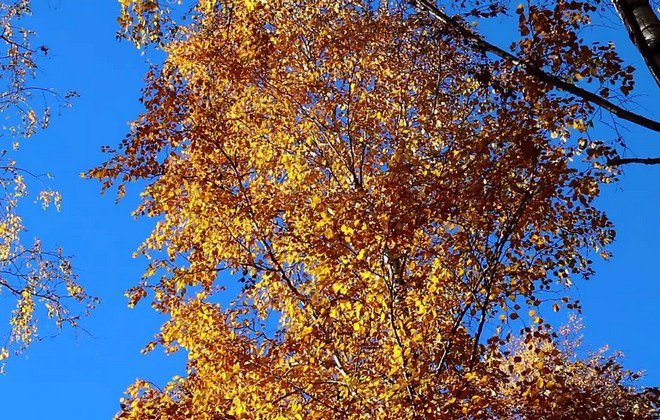

The height of the plant is about 18-24 m, the trunk girth can reach up to 1 m. In the wild, it is found in North America, in greatest quantities in its southern parts.
Important! This type of birch, unlike all the others, blooms at the end of spring, which will help to diversify your site in an excellent way against the background of other trees.
This species is distinguished by high shade tolerance, prefers river banks and wetlands for its growth. Has a shiny bark of a golden or yellowish-gray hue, which lends itself very well to peeling, densely covered with longitudinal white cracks.
The root is located rather superficially, widely branched. Young shoots are gray in color; when they reach the age of one year, white lentils form on their surface.
Standards in accordance with GOST and special types of birch wood
Standard rationing determines not only the optimal values of hardness, density, moisture, as well as color and size, but also determines the number of possible defects and where this wood can be used.
So:
- GOST 862.3-86 indicates that for, for example, skis, birch of the 1st grade should be used, the thickness of the workpiece of which does not exceed 16 centimeters, and the length is 1.5 meters.
- GOST 9462-88 states that birch wood of grades 1 and 2 with a nominal minimum length of 1.3 meters should not have wormholes, sap rot and a height of branches from the bark at the level of 2 centimeters can be used for the production of plywood;
- GOST 2292 indicates the norms for the safe transportation of wood, including birch;
- GOST 9014.0 (one of 4) defines the standards for wood storage.
Quality standards also set the amount of use of substances that improve the performance of wood.
Stabilized
Polymerized birch wood or stabilized one that is impregnated with fillers and can be used in the manufacture of handles of knives, hatchets, handicrafts. After exposure to chemical reagents under pressure and for a certain time, the wood becomes stronger, stronger and more resistant to moisture.
After such processing, birch wood takes on color better when dyed and can better imitate more expensive varieties. The stabilization or preservation process of wood guarantees deep penetration of the required substance into the fibers and capillaries.
In the photo - stabilized Karelian birch wood
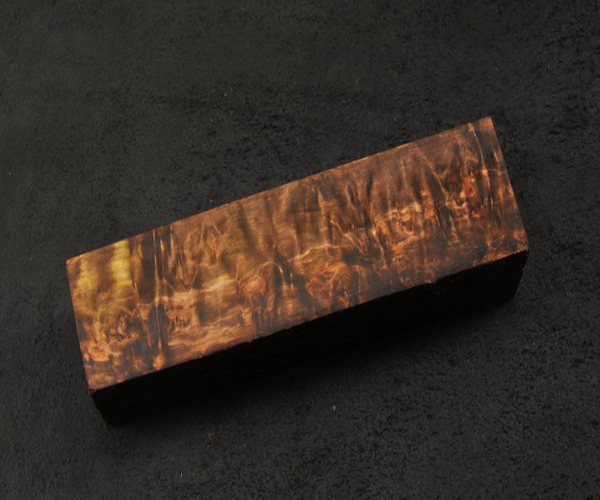

Stained
Wood that has been lying in a natural reservoir for a long time (sometimes decades) is considered very valuable. During its stay in the water, the tree is impregnated with valuable minerals and sometimes radically changes color.
In water, even wood such as birch becomes somewhat stronger. True, in order to be able to use it, say, for interior cladding or in the manufacture of furniture, it is necessary to dry it in a special chamber.
Birch is a valuable tree. In addition to the aesthetic pleasure of its appearance, it gives a person valuable branches (for brooms), fruits, flowers, earrings (for medicinal purposes) and wood, the successful use of which is possible in the national economy.
Planting a plant
Next, let's talk about the options for planting a plant, both vegetatively and generatively. We will indicate which option will give the best survival rate.
Seeds
Planting with seeds can be carried out both immediately after harvest and in the fall. The seeds are not afraid of frost, so there is no need to additionally insulate the soil.
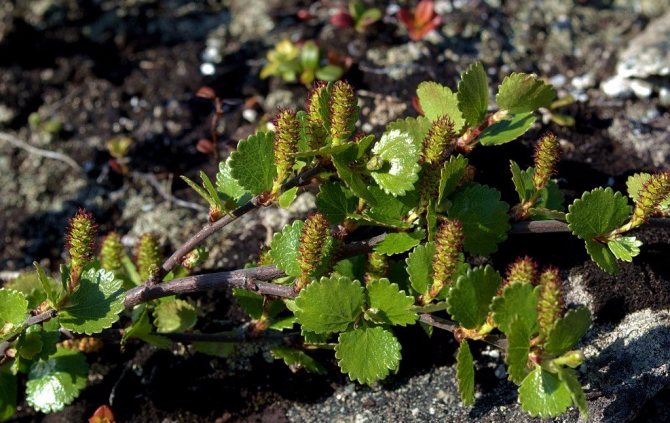

Before sowing, it is advisable to double-check all the seeds and dry them well. Next, we select a place according to the criteria described above and sow. Several furrows should be made, 5 cm deep and up to 10 cm wide. Pour out all the seed and carefully roll up the soil. The distance between furrows should be at least 30 cm. It is worth remembering that every year the seeds lose their germination, so it is advisable to sow them in the same year when they were harvested.
Saplings
Let's start by choosing a seedling. Ideally, buy an option that is in a container, since there is no danger of damage or drying out of the roots. Always fully check the condition of the seedling at the time of purchase.
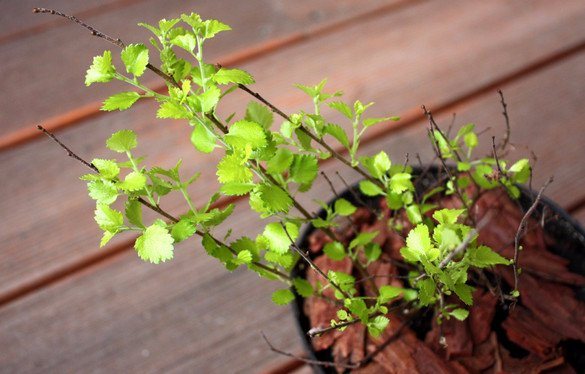

A few days before planting, a hole is dug with a diameter of 1-1.5 m. The lower soil is removed, and the upper one is mixed with humus, peat, fertile garden soil, sand and mineral fertilizers so that the roots of the seedling do not come into contact with pure humus or "mineral water" ...
Next, planting is carried out, during which the roots of the plant are not separated from the earthen coma (if present). If there is no coma, then it is advisable to soak the roots in water, holding them for several hours. First, we line the bottom of the pit with drainage, which can be represented by small pebbles, gravel or expanded clay. The layer should be about 15-20 cm.
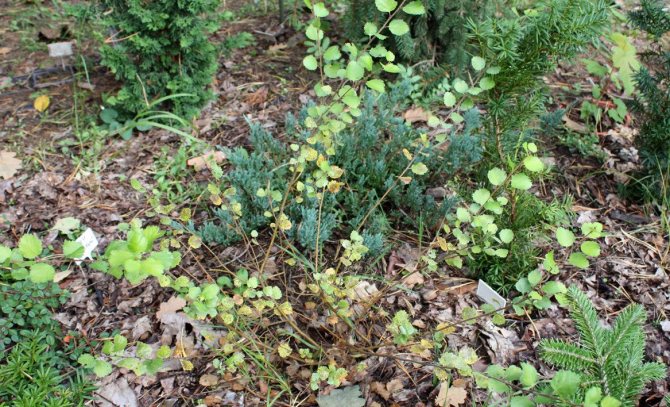

Next, pour out a little soil mixture so that a mound forms in the center, on which we will plant an earthen lump with roots. After placing the seedling in the hole, adjust it so that it grows upwards and not to the side. Pour the remaining earthen mixture, lightly tamping it.
At the end, we water the bush and mulch it, if this option is acceptable for you.
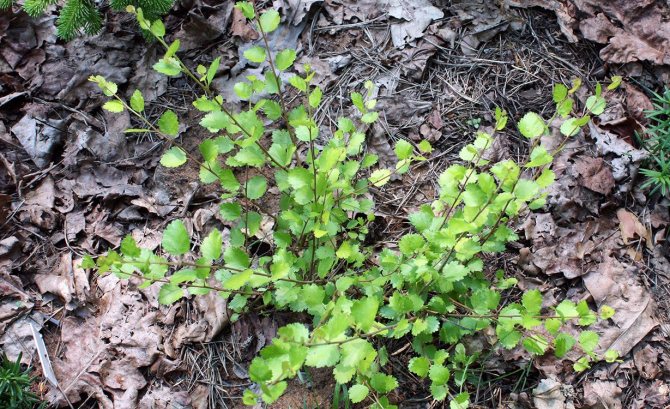

Did you know? In northern latitudes, birch pollen sometimes causes seasonal hay fever in those with hypersensitivity.
"City" grade
Hanging birch "Yungi" is a small standard tree, slow-growing, picturesque. The plant has an umbrella-shaped weeping crown. Its height is up to 5 m, and its width is up to 3-4. The bark has a white color, a smooth surface, on which black rare cracks are visible. The shoots of the tree are flexible. Young branches hang down to the ground.This gives the crown the characteristic umbrella look.
Hanging birch "Yungi" has light green leaves. Their size is smaller than that of the species plant. The leaves have a pointed triangular shape. They are serrate at the edges. Leaves bloom in early spring. With the onset of autumn, they acquire a magnificent yellow color. At a young age of the tree, like the species plant, the leaves are sticky and smooth. Flowers are presented in the form of yellowish inflorescences - melliferous earrings.
The root system of the tree is superficial. It is capable of lifting road surfaces, shows sensitivity to planting in a near-trunk circle and soil compaction, the presence of drainage.
The development of the plant is quite intensive. This variety of birch is highly winter-hardy, while loving the sun. Planting is best done in the spring. The tree is resistant to urban conditions.
The tree has no preferences for the condition of the soil. It can be found on any soil from neutral to slightly acidic. The plant develops normally on alkaline soils, sensitive to salinity. Variety "Yungi" is used as a tapeworm in small gardens and household plots. The tree is also used in the design of the coastal line of water bodies.
Protection against diseases and pests
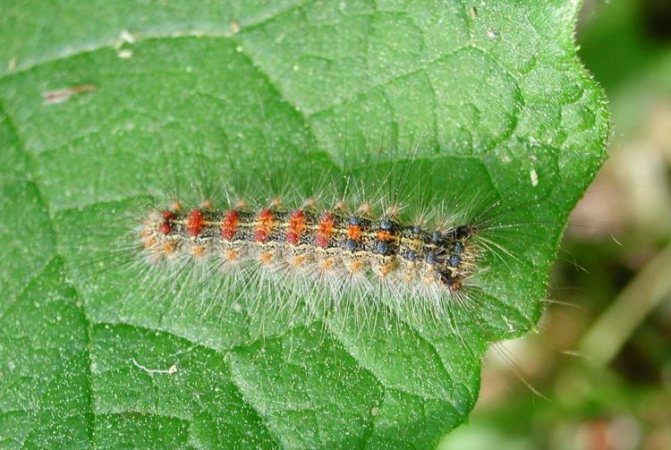

Trumpet beetles damage young shoots and leaves. It is recommended to collect and burn the affected leaves, and dig up the trunk circles. Caterpillars of the nun silkworm and corydalis bucephalus eat the leaves, leaving only veins. The caterpillars are shaken off, and the plants are treated with insecticides. May beetles and their larvae eat the roots.
It is recommended to dig up the soil and select the larvae. Birch trees are susceptible to many fungal diseases, especially tinder fungi, which destroy wood. They should be removed. Spraying against rust is carried out by spraying with fungicides, for example, copper oxychloride (0.4%).

